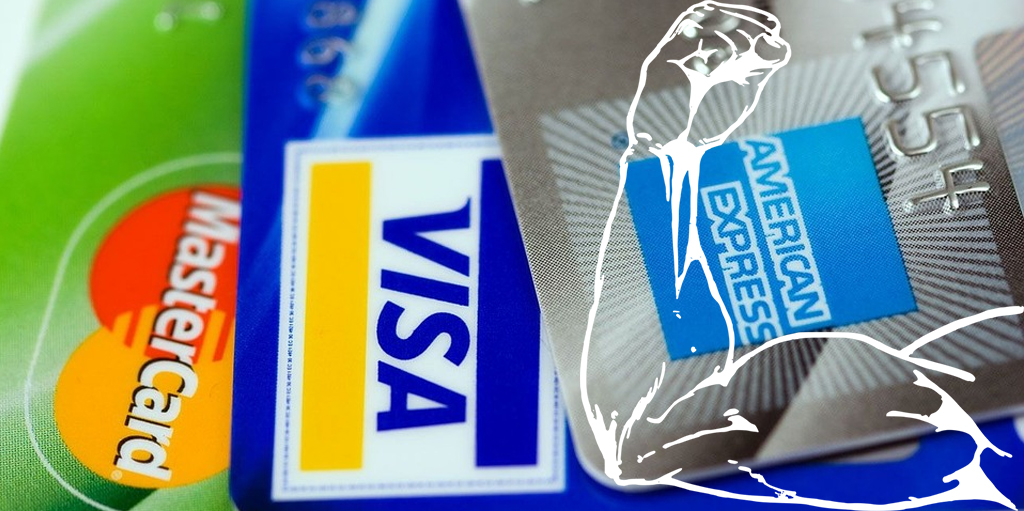
A Step-by-Step Guide for Buying a Home
___
Published Date 8/11/2017
If you are just starting the home buying process, your first step is to get your financing in line. The fact is that most home purchase transactions revolve around the financing. If that doesn’t happen, the deal doesn’t happen.
Because of the perceived difficulty of getting a mortgage—one real estate pundit who should know better called it “insanely difficult”—sellers and their agents are highly averse to even considering any offer from a prospective buyer who doesn’t have some sort of written document from a lender confirming that he has at least begun the process and has been approved on a preliminary basis.
The preapproval process is easier than many people believe. You begin by supplying your loan officer with some essential documents. These will be, at a minimum:
- A recent pay stub showing rate of pay and year-to-date earnings.
- A bank statement or statements showing the source of funds needed to complete the purchase.
- If there are any large deposits (greater than 10% of the annual income), you’ll have to document their source.
- If you are relying on gift funds from a relative, you’ll provide a gift letter and one bank statement from the donor showing the source of their fund.
- If you own a business or rental property, or if you get significant income from investments, you’ll provide two years’ tax returns with all schedules.
- A copy of government-issued photo ID, such as a valid driver’s license or passport.
The loan officer will help you prepare your loan application and documents for preapproval. He or she will get a credit report and merge all the information into your loan application.
Some lenders issue a “pre-approval.” This involves gathering your documents, completing a loan application and submitting it to the automated underwriting system (AUS). This is all done online, so it’s a quick process. The AUS should return a result of “Approve/Eligible” or “Accept,” which means that your application has been approved as it was submitted.
A more thorough—and more convincing—approach is to get what is called a “TBD approval.” This means that your lender has submitted your loan package to the underwriter (not just the automated system) for review and approval, even though the actual property is To Be Determined (TBD). When the underwriter approves your application, he or she will do so conditioned upon the purchase agreement and appraisal, along with some other routine conditions. This type of approval is much more attractive to any seller because it increases the likelihood in their mind that your deal will go through if they select your offer over any others they may be considering. Multiple offers are very common in many areas today, so the TBD approach is by far the best.
Now that you have your financing arranged, you can make an offer on a home. You will have met with your Realtor® to decide on area, amenities and a price range. It is always a good idea to make your own list of what you want in a home. You should prioritize those items that are essential above those that would be nice to have.
When you have found a home that meets your criteria, you and your Realtor® will prepare your offer to the seller. You will write a check, usually to the title company or settlement agent, to show the seller that you’re serious. This check is called, appropriately, the “earnest money deposit.” Although technically no specific amount is required to have a binding contract, it is always advisable to make as large a deposit as you can. You do not risk a single penny of this money; if the seller doesn’t accept your offer, the check will be returned to you. Your Realtor® will send your offer to the seller’s agent, who will present it to the seller.
A word about making offers: the real estate market is highly competitive in many areas, and multiple offers—several people making an offer on the same house—are common. Sadly, you may not get the first home you make an offer. Don’t give up! Your perfect house is out there.
When you make an offer on a home, the seller has three choices: accept it as written (hooray!), reject it (boo!) or issue a counter-offer (huh?). In the third case, the seller says, “I won’t sell it to you for that amount of money, but I will take this amount, instead.” Any change that the seller makes to your offer, no matter how trivial, is considered a counter-offer.
Now you have the same three choices the seller had. If you can live with the price and terms on the counteroffer, you’ll sign the form, and you are now “in contract.” You can also choose to reject the seller’s counter-offer, and you’ll get your earnest money deposit back. You may also continue negotiations by making your own counter-proposal to the seller. This continues until you and the seller have a “meeting of the minds,” or until you give up and go home.
Once you are “in contract,” your Realtor® will open escrow. He or she will deliver the signed contract to the company handling the escrow—often a title company—along with your deposit check. It will be deposited in the escrow holder’s trust account at that time.
Next, the loan officer will order the appraisal. Most lenders require that you pay for it in advance. The typical cost is $450-$550. Appraisals generally take 5 days to a week to complete.
If your offer called for inspection reports, such as pest control (termite), roof and a comprehensive home inspection, your Realtor® will order them now. You may have to pay for these at the time they are performed, depending on the contractor’s policy.
Your offer to the seller will contain clauses known as “contingencies.” These are conditions that must be satisfied before you continue with the sale. One common example is an “inspection contingency.” This clause states that you must be satisfied with the inspection report before you’ll proceed with the purchase. If the report finds a defective dishwasher, for example, you could tell the seller (in writing), “I’ll continue with my purchase only if you replace the dishwasher.” If the seller refuses, you have the right to cancel the transaction—and you’ll get your deposit back.
There are two other important contingencies, involving the loan and the appraisal. The loan contingency states that if for some reason your loan doesn’t go through within a specified time, you’re allowed to walk away from the sale, and you’ll get your deposit back. The appraisal contingency states that the appraisal’s value is lower than the price you’ve agreed on with the seller, you can cancel the sale and get your deposit back. In practice, a low appraisal means that you and the seller renegotiate the price. Sellers tend to be willing to do this, rather than place the home back on the market and take their chances on finding another buyer, however.
While you’re waiting for the appraisal and inspection reports to arrive, your lender will gather other documents and verifications. They’ll get a written verification of employment, which often can be done through an automated service, such as The Work Number (Equifax). They may order a transcript of your income taxes from the IRS for one or two years to ensure that those numbers are consistent with the documentation you’ve supplied for your application.
Your initial loan approval will have some conditions that you and your loan officer will satisfy before you can sign loan documents. Most of these tend to be routine and easily handled—you may be asked to update bank balances or provide an updated pay stub, for example.
Once the underwriter has signed off the conditions, your loan will be in a condition known as “clear to close.” This means that the lender can draw loan documents for you to sign. They’ll send those documents to the closing agent (often a title company), and the signing package will be prepared.
Before you can sign loan documents, you must receive a “Closing Disclosure” (CD). This five-page form contains the best estimate of the cost of your loan, close to the date of closing. You will wait three business days from the time you receive it before you can sign loan documents.
You’ll go to the title company or some other convenient location. There are mobile signing services all over the country, so many people sign documents in their home or office. Some of the documents must be notarized. This means that a licensed and bonded person watches you sign, then attests that, to the best of their knowledge and belief, you are the person you claim to be.
After you sign your name at least 8,000 times—it may feel like that—the escrow officer will send some of the signed documents to the lender for review. If everything is in order, the lender will “fund” your loan, which means they’ll wire the money to the escrow holder’s account.
Once the loan has funded, the escrow officer will perform a final audit of the file to make sure all the numbers are accurate. She tells the appropriate personnel to record several documents with the county where you live, and your escrow is closed. You are now a homeowner—congratulations!
In these days of automation, the loan process is faster than it used to be. There may be things that delay the process, however, such as an employer who doesn’t respond promptly to the verification of employment request, or questions about the appraisal.
Most real estate transactions today tend to specify 30-day escrow periods. Ideally, your lender should be able to get everything done ahead of time, so no one has to scramble at the end to close your escrow.
As you set out on your journey to home ownership, know that there are many people who want the same thing as you: your Realtor® and your loan officer, who are on the front lines with you. But there are also many people behind the scenes helping you: the escrow officer and her staff, your Realtor’s staff, and dozens of people working for the lender, approving your loan, sending you important disclosures, preparing documents and wiring money from the loan into the escrow to complete your transaction.
As you set out on this exciting and important journey, we wish you the very best.
Source: TBWS
All information furnished has been forwarded to you and is provided by thetbwsgroup only for informational purposes. Forecasting shall be considered as events which may be expected but not guaranteed. Neither the forwarding party and/or company nor thetbwsgroup assume any responsibility to any person who relies on information or forecasting contained in this report and disclaims all liability in respect to decisions or actions, or lack thereof based on any or all of the contents of this report.


LaVerne StMary
Sr. Mortgage Loan Professional
NMLS: NMLS# 113731
Mortgages and Lifestyle
505 N Sam Houston Pkwy. E #1050 Ste. 245, Houston TX 77060
Company NMLS:
Cell: 832-253-3966
Email: laverne.stmary@gmail.com

LaVerne StMary
___
Sr. Mortgage Loan Professional
NMLS: NMLS# 113731
Cell: 832-253-3966
Last articles
___

Markets will be focused on PCE and GDP this week
1/22/2024
Last week the 10 year note +19 bps, 2 year +22 bps. The news coming out of Davos... view more

Initial Weekly Jobless Claims continue to climb
11/16/2023
Initial Weekly Jobless Claims were higher than expected, 231K versus estimates o... view more

Inflation outlooks improve on trade data
7/14/2023
This morning the 10 year note opened at 3.79% +2 bps and MBS prices began the da... view more

Inflation continues to slow according to March Personal Consumption Expenditures
4/28/2023
Yesterday the 10 year note yield increased 8 bps, this morning the 10 began -7 b... view more

Central banks around the world continue to fight inflation
12/16/2022
Since Wednesday when chairman Powell doused market beliefs the Fed would become ... view more

A few tips when relocating to your new digs to save you time, hassles, and money
9/7/2022
Moving. It can be an art form or a free-for-all (with or without pizza on board)... view more

Mastering the art of throwing pillows
9/1/2022
The Rule of Three. Interior decorators heartily believe when it comes to groupin... view more

A relatively calm day for markets after a volatile week
4/22/2022
Selling continued this morning in MBSs and treasuries. Yesterday Fed chair Powel... view more

Keeping your DIY from becoming a DIWHY
1/11/2022
Many home projects start off as a great idea. Save some money while giving your ... view more
Load more
 Mortgages and Lifestyle
Mortgages and Lifestyle











































